Table of Contents
Keeping your carpet clean is not just about maintaining its appearance but also promoting a healthier environment in your home.
Regular carpet cleaning helps remove dust, dirt, and allergens, improving indoor air quality.
We will discuss the benefits of regular carpet cleaning, the necessary tools and materials, the recommended frequency of cleaning, and some useful tips for thorough DIY carpet cleaning.
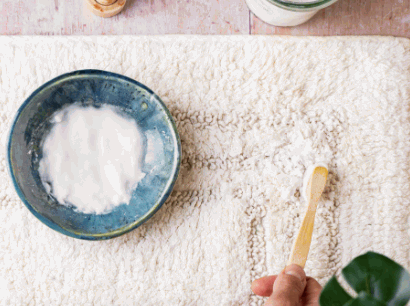
Regular cleaning of your carpet is essential to maintain a healthy indoor environment and prolong the lifespan of your carpet.
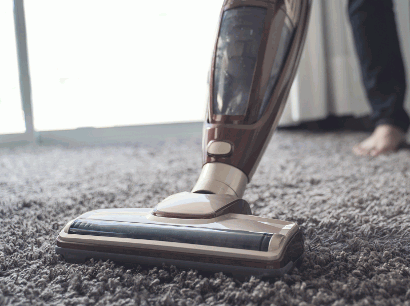
Regular carpet cleaning offers numerous benefits, including improved indoor air quality, extended carpet lifespan, and the removal of stains for a fresh and hygienic living space.
By maintaining a consistent cleaning routine, you can effectively eliminate trapped pollutants, allergens, and dust mites from your carpets, resulting in improved air quality within your home.
Regular cleaning helps in preventing the growth of mold and mildew, which can pose health risks and cause unpleasant odors. Not only does this practice enhance the overall aesthetic appeal of your living space by keeping your carpets looking fresh and vibrant, but it also plays a crucial role in preserving the quality and texture of your carpets over time.
So, investing time and effort in regular carpet cleaning can lead to a healthier, longer-lasting, and more visually appealing home environment.
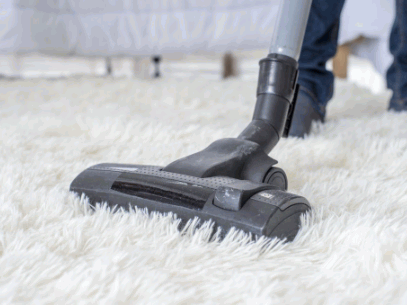
To clean your carpet effectively at home, you will need a few essential items such as a vacuum cleaner, carpet cleaning solution, bucket, scrub brush, sponge or cloth, and towels.
For those looking to opt for eco-friendly cleaning solutions, natural ingredients like white vinegar, baking soda, and essential oils can be great alternatives. White vinegar is excellent for removing odors and disinfecting carpets while baking soda helps in absorbing moisture and eliminating stains. Mixing water with a few drops of essential oil, such as lavender or tea tree oil, can add a pleasant fragrance to your homemade carpet cleaner. These DIY options are not only safe for your carpets but also for the environment.
A vacuum cleaner is an essential tool for regular carpet maintenance, as it helps remove dirt, dust, and debris trapped in the carpet fibers.
Utilizing appropriate attachments with your vacuum cleaner is key to achieving a thorough cleaning. By switching to different nozzles or brushes, you can effectively target specific areas and ensure a more comprehensive dirt removal process.
It's imperative to pay special attention to high-traffic areas and the spaces underneath furniture, as these spots tend to accumulate more dirt and debris. Regular vacuuming in these areas not only enhances the appearance of your carpet but also helps prevent the buildup of grime that can lead to long-term damage.
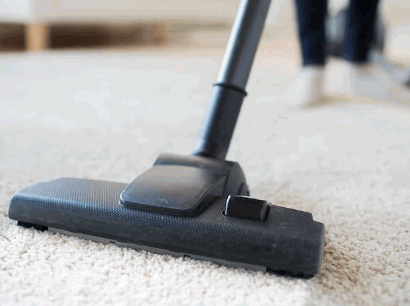
A carpet cleaning solution, when combined with warm water, is effective for spot-cleaning stains and maintaining the overall cleanliness of your carpet.
To create a homemade carpet cleaning solution, you can mix equal parts of white vinegar and water in a spray bottle. For tougher stains like coffee or wine, sprinkle baking soda over the affected area before spraying the solution. Gently scrub the stain with a soft bristle brush or a clean cloth, working from the outer edges towards the center to prevent spreading. Allow the solution to sit for a few minutes to penetrate the stain before blotting it up with a clean, dry towel. Repeat the process until the stain is lifted, and then let the carpet air dry completely.
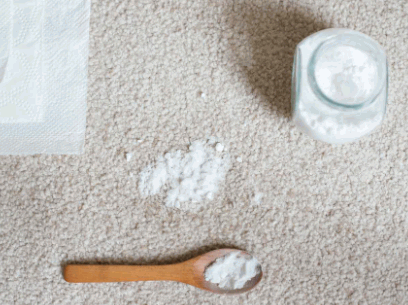
A bucket is a handy tool for mixing cleaning solutions, rinsing out dirty cloths, and carrying water during the carpet cleaning process.
It plays a crucial role in organizing cleaning materials and tools efficiently. When choosing a suitable bucket size, consider the volume needed for the task at hand. For smaller areas or spot-cleaning, a compact bucket with a capacity of around 2-5 gallons works well. For larger carpeted areas or deep cleaning sessions, opt for a larger bucket with a capacity of 5-10 gallons. A bucket with a sturdy handle and durable construction is essential for easy transportation of water and cleaning solutions.
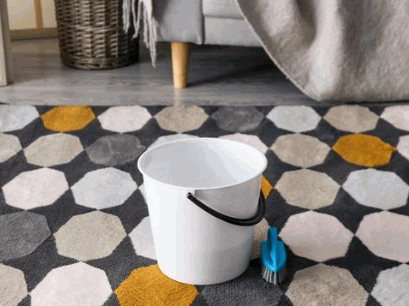
A scrub brush is essential for loosening dirt from carpet fibers, especially in high-traffic areas or where stains are present.
Using the right type of scrub brush is crucial for maintaining the integrity of various carpet materials and textures. For delicate or plush carpets, opt for a soft-bristled brush to prevent any damage while effectively lifting dirt. When scrubbing, it's important to use gentle circular motions rather than harsh back-and-forth movements. This technique helps dislodge dirt without pulling or tearing the carpet fibers. By being mindful of the brush type and scrubbing technique, you can ensure a thorough cleaning without compromising the quality of your carpets.
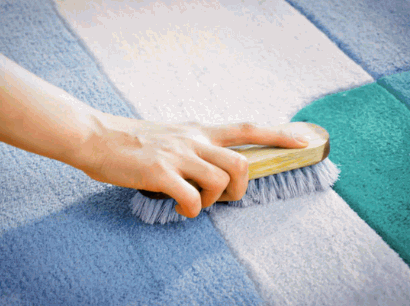
Sponges or cloths are useful for spot-cleaning stains on carpets and absorbing excess moisture during the cleaning process.
They play a crucial role in preventing water damage and promoting faster drying, especially in high-traffic areas prone to spills.
When selecting the right sponge or cloth for the job, consider the material and texture. Microfiber cloths are excellent for gently blotting out liquid stains without leaving residue, while natural sponges are ideal for absorbing moisture from deep within the carpet fibers.
For tougher stains, opt for a scrubbing sponge with a non-abrasive side to gently lift the dirt without damaging the carpet fibers.
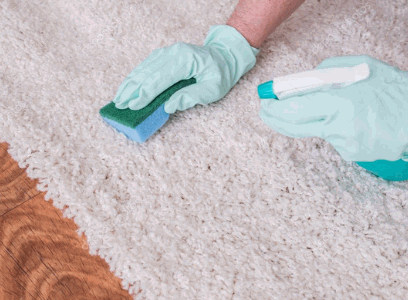
Towels play a crucial role in drying the carpet after cleaning and freshening up the fibers for a clean and inviting appearance.
Choosing clean and absorbent towels is essential as they help remove excess moisture from the carpet, preventing the growth of mold or mildew. To ensure thorough drying, gently press the towel onto the damp areas of the carpet, absorbing as much water as possible. Avoid rubbing the towel vigorously, as this can damage the carpet fibers. For optimal results, rotate the towel to a drier area as it becomes saturated. After drying, allow the carpet to air out to further enhance freshness and prevent any musty odors.
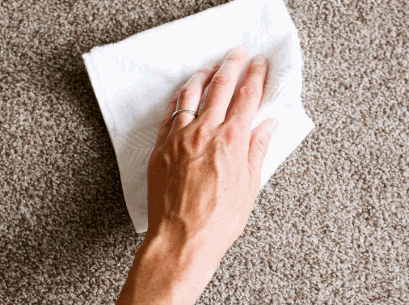
The frequency of carpet cleaning depends on various factors such as household traffic, the presence of pets, and indoor air quality.
For instance, households with young children or multiple occupants may require more frequent cleaning to keep up with the increased foot traffic. The presence of pets can also impact the condition of your carpets, as pet fur, dander, and odors can accumulate quickly. Consideration of lifestyle habits is crucial too - frequent entertaining or a love for outdoor activities could mean more dirt being tracked indoors. Establishing a cleaning schedule that aligns with your specific needs and preferences ensures that your carpets stay fresh and inviting for longer periods.
The frequency of carpet cleaning is influenced by factors such as the presence of high-traffic areas, stubborn stains, and the implementation of preventative cleaning measures.
High-traffic areas in a home or office space can lead to a quicker buildup of dirt and debris on carpets, necessitating more frequent cleaning sessions. Similarly, persistent stains, if not promptly attended to, can become more embedded over time, requiring additional cleaning efforts.
To help reduce the need for frequent deep cleaning, it's advisable to implement preventive measures like using doormats at entrances, regular vacuuming, spot cleaning spills promptly, and rotating furniture to distribute weight evenly on the carpet.
Cleaning your carpet at home involves several key steps, including vacuuming, spot cleaning, preparing the cleaning solution, scrubbing, rinsing, and drying.
Vacuuming the carpet is the first step in the cleaning process to remove surface dirt, dust, and debris from the carpet pile.
Different carpet textures and pile heights require specific vacuuming techniques for optimal cleaning results. For example, looped or twisted pile carpets may need gentle vacuuming to prevent the fibers from getting pulled out. On the other hand, plush or shaggy carpets benefit from deeper suction to lift embedded dirt. Using vacuum attachments such as a crevice tool or upholstery brush can help reach tight spaces and corners, ensuring a thorough clean. Regular vacuuming not only enhances the appearance of carpets but also prolongs their lifespan by preventing dirt buildup and maintaining the integrity of the fibers.
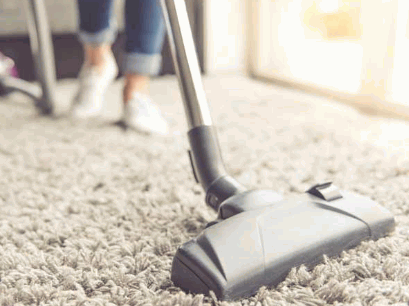
Spot cleaning stains promptly using home remedies or carpet cleaning solutions can prevent them from setting and permanently damaging the carpet.
This timely action is crucial because once stains soak into the carpet fibers, they can become more stubborn and challenging to remove.
DIY solutions using everyday household items like vinegar, baking soda, and club soda are effective options for tackling common carpet stains. Vinegar works well on tough stains like coffee or wine, while baking soda can help absorb and neutralize odors. Club soda is particularly useful for fresh spills and can lift the stain before it sets. By utilizing these simple yet powerful remedies, you can maintain the beauty and longevity of your carpet without resorting to harsh chemicals.
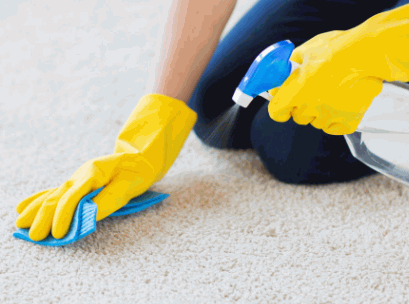
Preparing a carpet cleaning solution involves mixing the appropriate amount of cleaner with warm water to create an effective solution for cleaning stains and dirt.
The ratio of cleaner to water typically depends on the type and intensity of stains on the carpet. For general cleaning, a common ratio is one part cleaner to five parts water. It's essential to consider the type of cleaner based on the carpet material; for example, for wool carpets, using a pH-neutral or wool-safe cleaner is recommended to prevent damage. Opting for eco-friendly and safe cleaning products not only ensures a healthier environment but also protects your carpet and the air quality in your home.
Using a scrub brush, gently scrub the carpet in circular motions to work the cleaning solution into the fibers and loosen dirt and stains.
It is crucial to maintain a light and consistent pressure while scrubbing to prevent damaging the fragile carpet fibers. By applying too much force, there is a risk of causing fraying or tangling, which can ruin the overall appearance of the carpet. Ensuring a steady and even motion throughout the cleaning process helps to effectively lift embedded dirt and grime from the depths of the carpet. This method not only ensures a thorough cleaning but also helps in preserving the longevity and quality of your carpets.
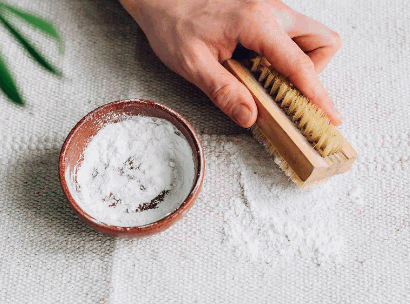
After scrubbing, rinse the carpet with clean water to remove residual cleaning solution and dirt, then use towels to absorb excess moisture before drying.
To ensure thorough rinsing, use warm water when rinsing the carpet as it helps to break down any remaining detergent residues. Make sure to focus on areas where soap may have accumulated, such as high-traffic zones or spills.
After rinsing, gently blot the carpet with clean towels to soak up the water, repeating until the towels no longer absorb moisture. To avoid water damage, ventilate the room well or use fans to facilitate faster drying, preventing mold and mildew growth.
Drying the carpet completely is crucial to prevent mold growth and musty odors, so ensure proper ventilation and use fans or open windows for faster drying.
It is recommended to blot any excess moisture with a clean towel before applying any drying techniques. This will help speed up the process and prevent water from seeping deeper into the carpet fibers.
Another effective method is to elevate furniture or objects on the carpet to allow air to circulate underneath, aiding in quicker evaporation.
For a natural freshening boost, sprinkle baking soda liberally over the carpet before vacuuming to neutralize odors and leave the carpet smelling clean and fresh.
To achieve effective carpet cleaning results, consider testing cleaning solutions, using a steam cleaner for deep cleaning, and protecting furniture and baseboards during the process.
To maintain clean carpets, regular vacuuming, spot cleaning, and rotating furniture placement can help extend their lifespan and keep them looking fresh.
Before applying a cleaning solution to the entire carpet, always test it on a small inconspicuous area to check for colorfastness and any adverse reactions.
This spot-testing process is crucial as it helps prevent potential damage to the carpet fibers or unexpected color changes. To carry out a patch test, select a hidden spot on the carpet, preferably near a corner or under furniture. Apply a small amount of the cleaning solution to this area and gently blot it with a clean white cloth. Let it sit for a few minutes before checking for any signs of discoloration, bleaching, or fiber damage. If there are no adverse effects, proceed with confidence to clean the entire carpet.
For thorough and deep cleaning of carpets, consider using a steam cleaner that can effectively remove embedded dirt, stains, and odors with hot water vapor.
Dig deeper: How To Steam Clean Carpets DIY
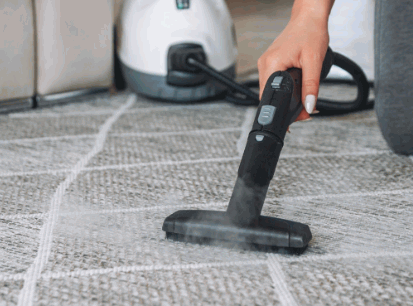
To prevent damage to furniture and baseboards during carpet cleaning, use protective materials such as plastic sheets or foam blocks to elevate furniture legs and avoid contact with wet carpet.
By taking these precautionary measures, you can ensure that your furniture and baseboards remain unscathed while maintaining a clean carpet.